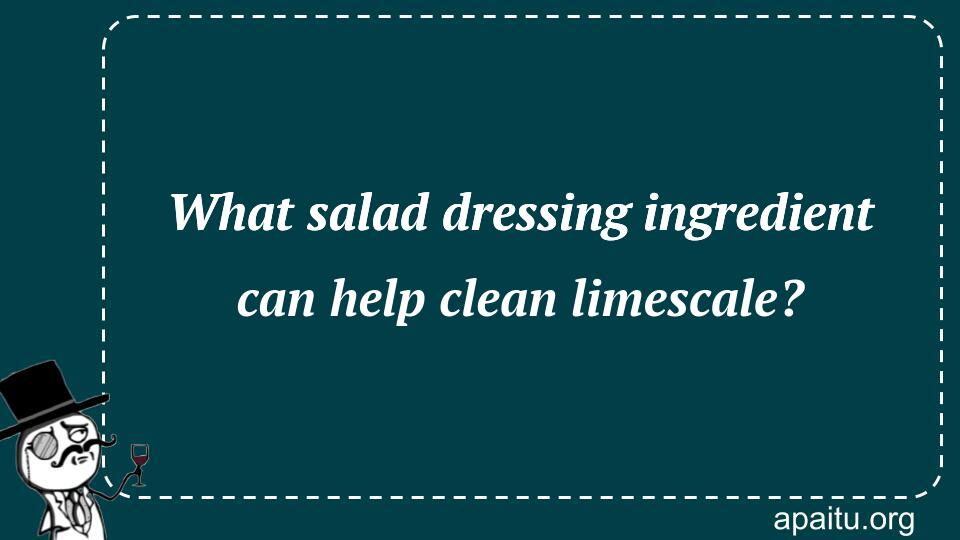Question
Here is the question : WHAT SALAD DRESSING INGREDIENT CAN HELP CLEAN LIMESCALE?
Option
Here is the option for the question :
- Oil
- Salt
- Vinegar
- Mustard
The Answer:
And, the answer for the the question is :
Explanation:
Limescale is characterized by its white, crusty, and brittle appearance, and it is significantly more difficult to remove than other types of buildup, such as soap scum. It can be found in areas that come into contact with hard water, such as the tiles in bathrooms, the toilets, the faucets, the kettles, and the washing machines. Calcium and carbonate ions, which are abundant in hard water, are the primary components of limescale. Hard water is also rich in minerals and salts. Limescale can be removed in a variety of ways, some of the most effective of which include installing a water softener and washing with vinegar and pumice stones.

Vinegar: A Versatile Solution for Tackling Limescale
Limescale, the chalky white residue that accumulates on surfaces exposed to hard water, is a common nuisance in many households. From faucets and showerheads to kitchen appliances and bathroom fixtures, limescale can stubbornly cling to surfaces and diminish their appearance. While there are numerous cleaning products available to combat limescale, there’s a simple and readily available ingredient that can be highly effective: vinegar. Yes, that versatile liquid found in most kitchens can be a powerful ally in the battle against limescale.
Vinegar, particularly white distilled vinegar, is prized for its acidic properties, which make it an excellent choice for removing limescale. The main component of vinegar is acetic acid, which gives it its distinctive sour taste and pungent odor. When applied to limescale, the acetic acid reacts with the mineral deposits, such as calcium and magnesium, that make up the scale, effectively breaking them down and allowing for easy removal.
To harness the cleaning power of vinegar for limescale removal, there are several methods you can employ. One popular approach is to create a vinegar solution by mixing equal parts vinegar and water. This diluted solution is safe to use on a variety of surfaces, including metal, glass, and ceramic. Simply apply the solution to the affected area, allowing it to sit for a few minutes to penetrate the limescale. Then, scrub gently with a sponge or brush to loosen the deposits. Finally, rinse the area thoroughly with water to remove any remaining vinegar residue.
For more stubborn limescale buildup, you may opt for a stronger vinegar solution. In this case, use undiluted vinegar and apply it directly to the affected surface. Allow it to sit for a longer period, such as 30 minutes to an hour, to give the acetic acid ample time to dissolve the limescale. Then, scrub as needed and rinse thoroughly. It’s important to note that undiluted vinegar is more acidic and may not be suitable for all surfaces, so it’s advisable to test it on a small, inconspicuous area first.
vinegar can also be used as a preventative measure to minimize limescale buildup. Regularly incorporating vinegar into your cleaning routine can help prevent the formation of new deposits. For instance, you can fill a spray bottle with a vinegar and water solution and use it as a daily or weekly cleaner for surfaces prone to limescale. By regularly spraying and wiping down these surfaces, you create an environment that discourages limescale from accumulating.
Aside from its effectiveness in removing limescale, vinegar offers several other advantages. It is a natural and environmentally friendly alternative to many commercial cleaning products that contain harsh chemicals. Vinegar is non-toxic, biodegradable, and safe to use around children and pets. Moreover, it is readily available and affordable, making it a cost-effe